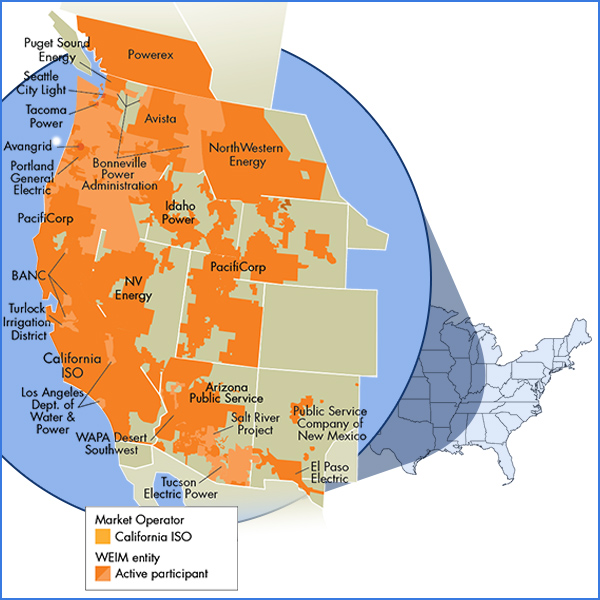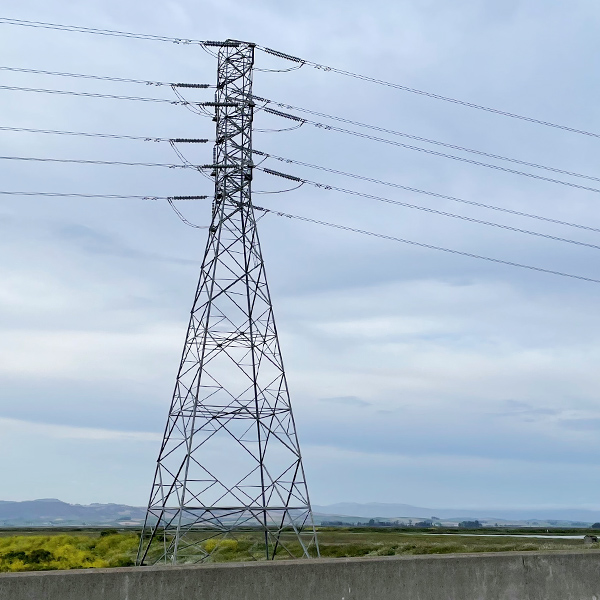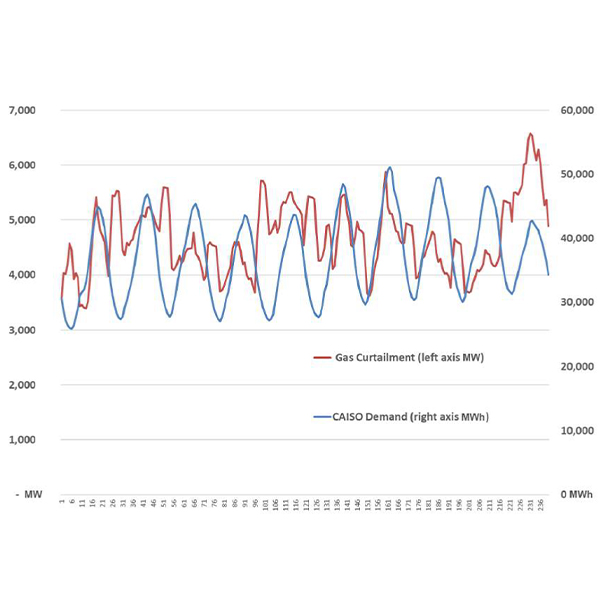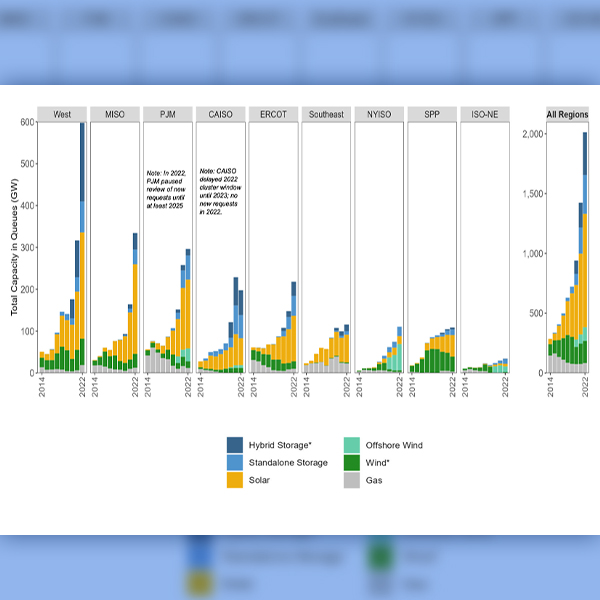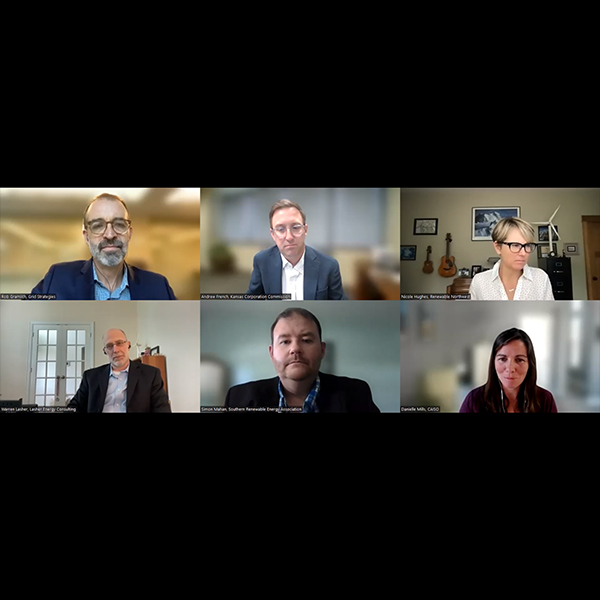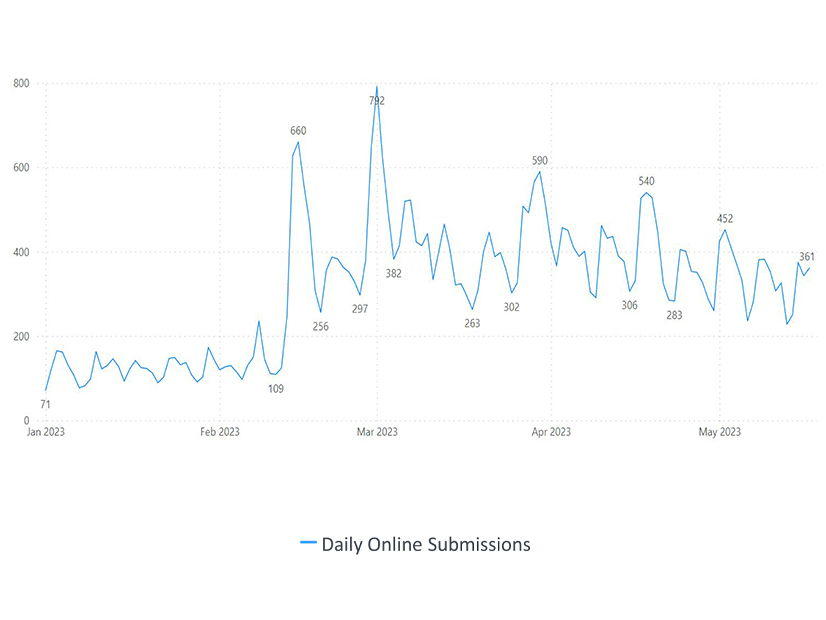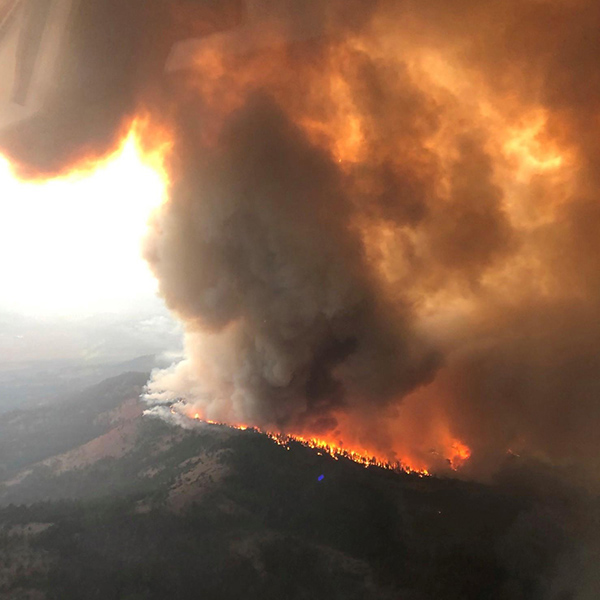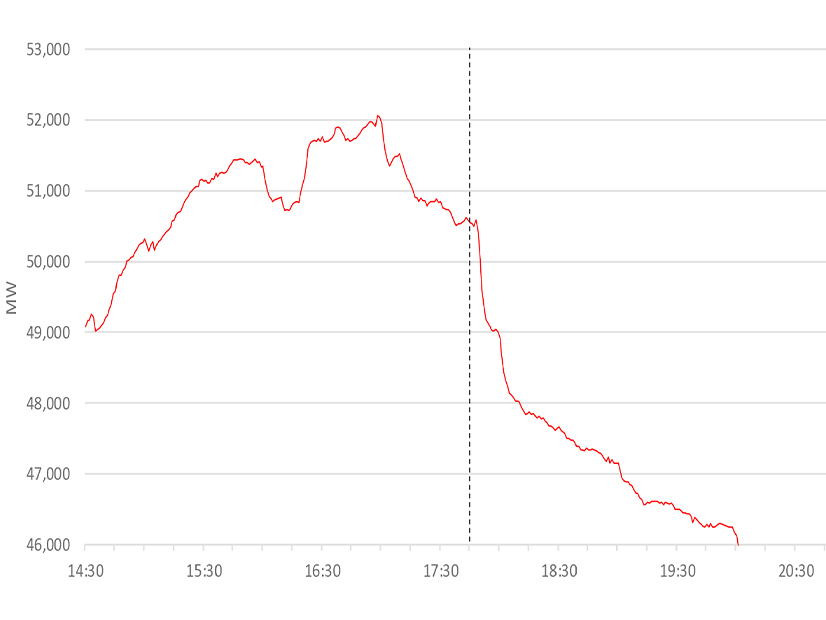CAISO/WEIM
CAISO Board of GovernorsCalifornia Agencies & LegislatureCalifornia Air Resources Board (CARB)California Energy Commission (CEC)California LegislatureCalifornia Public Utilities Commission (CPUC)EDAMOther CAISO CommitteesWestern Energy Imbalance Market (WEIM)WEIM Governing Body
The California Independent System Operator serves about 80% of California's electricity demand, including the service areas of the state's three investor-owned utilities. It also operates the Western Energy Imbalance Market, an interstate real-time market covering territory that accounts for 80% of the load in the Western Interconnection.
The Western Energy Imbalance Market Governing Body appointed new member Rebecca Wagner and elected a new chair and vice chair from among its members.
FERC rejected PG&E's proposed transmission-to-transmission interconnection agreement, which generated strong opposition.
California's gas-fired power plants experienced a surge of curtailments and spiking emissions during last summer's heat wave, according to the report from an in-state environmental coalition.
Developers held a ceremonial groundbreaking for the TransWest Express line, intended to carry 3 GW of wind power from Wyoming to California.
The Western summer reliability outlook is better than in recent years, but shortfalls could arise because of supply chain problems or scarce imports, WECC says.
At Infocast’s Transmission & Interconnection Summit, experts said interconnection requests continue to grow and grid operators have tried to keep pace.
A panel of experts discussing NERC’s Summer Reliability Assessment emphasized the need for teamwork in benefiting from increased interregional transmission.
Price drops for Tesla’s Model 3 and Model Y have made the EVs eligible again for a California rebate; now the incentive program is running out of money.
The California PUC awarded Pacific Gas and Electric more than $1 billion in wildfire mitigation costs despite opposition from its own Public Advocates Office.
Last September, California residents helped the state avert rolling blackouts by acting on an emergency text. What does that mean for RA planning?
Want more? Advanced Search
